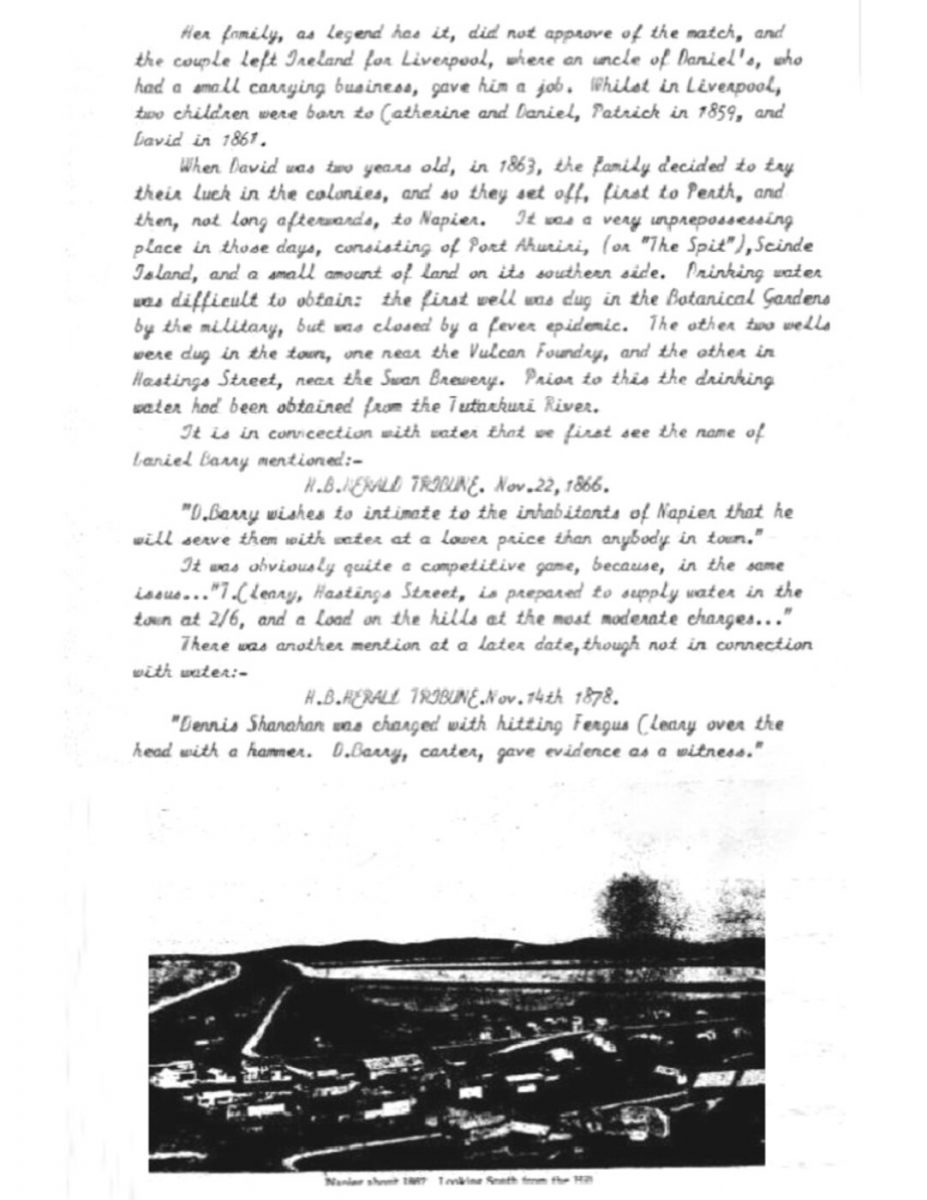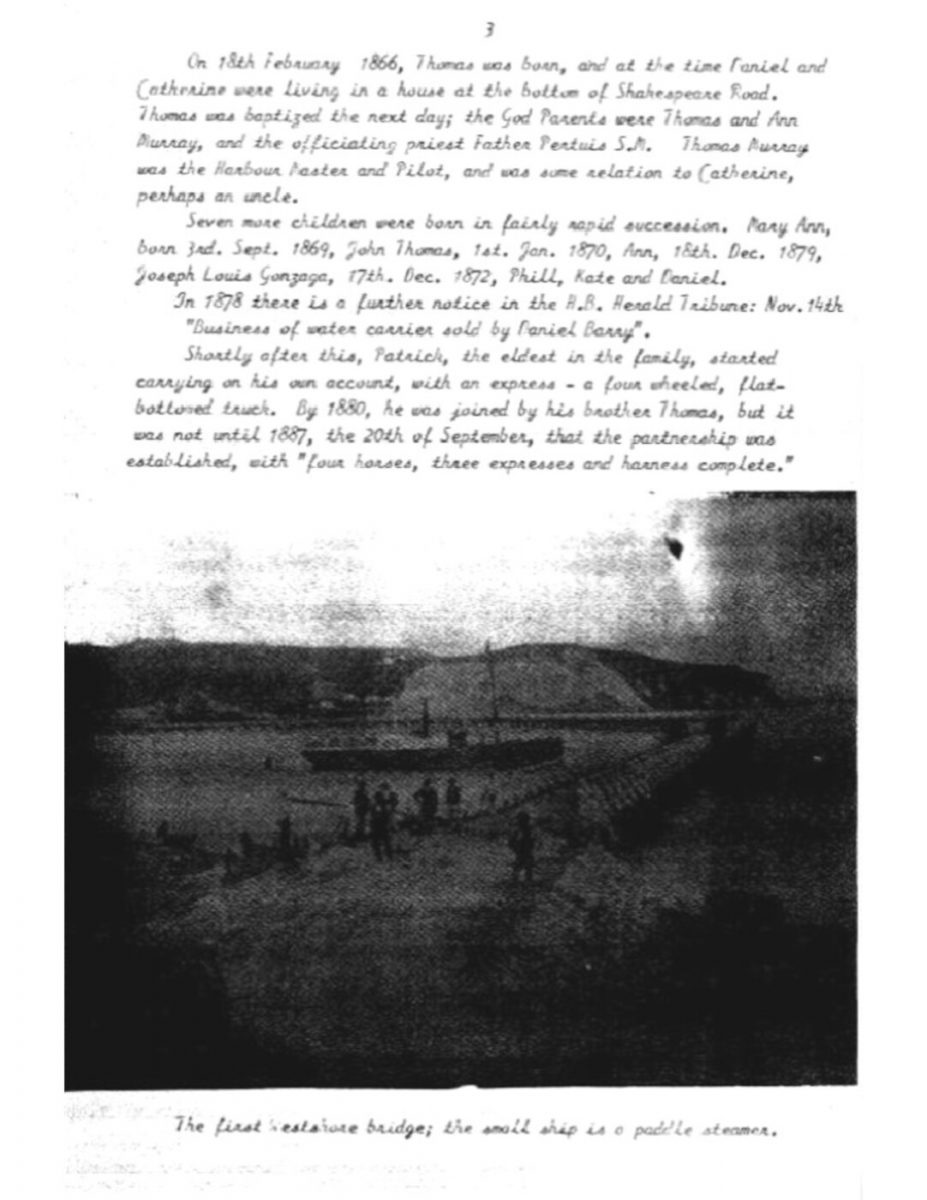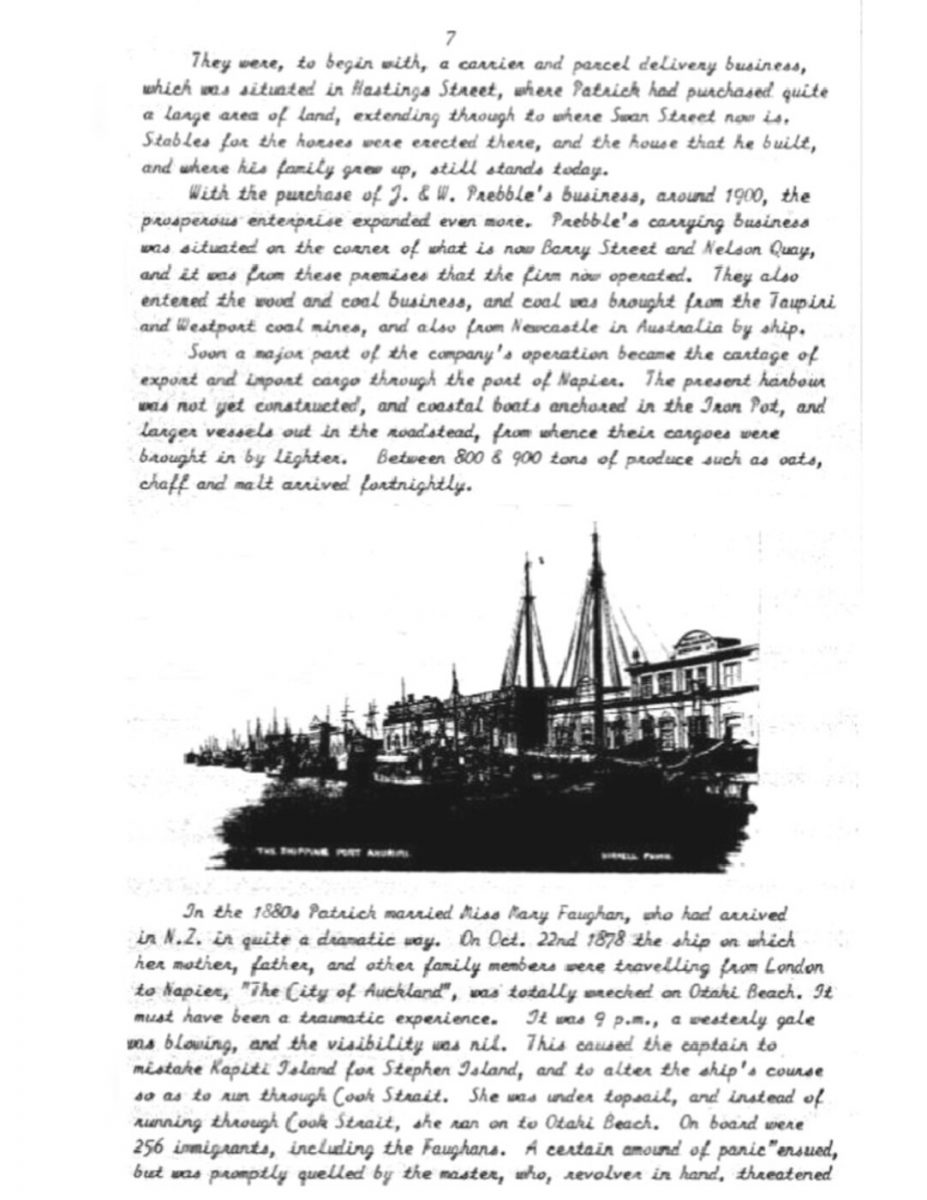Barry Bros History
Original digital file
SpoonerDM1041_BarryBros_History.pdf
Non-commercial use

This work is licensed under a Attribution-NonCommercial 3.0 New Zealand (CC BY-NC 3.0 NZ).
Commercial Use
Please contact us for information about using this material commercially.✖
Can you help?
The Hawke's Bay Knowledge Bank relies on donations to make this material available. Please consider making a donation towards preserving our local history.
Visit our donations page for more information.
Description
Sally Sutherland is the daughter of Tom Barry
Subjects
Business / Organisation
Barry Brothers LtdFormat of the original
Computer documentPeople
- Ann, Daniel, David, John Thomas, Joseph Louis Aloysius, Kate, Mary Ann, Patrick, Phill Barry
- Arthur, Thomas, David, Isabel, Edith Maude Barry
- Catherine Barry
- Catherine (Kitty), Daniel, David, Gertrude, Julia, Mary (Minnie), Patrick (Jock), Barry
- Daniel Barry
- Patrick Barry
- Peter Barry
- Thomas Barry
- Fergus Cleary
- T Cleary
- Jim Cottrell
- Benjamin Bousefield Creagh
- Miss Edith Maude Creagh
- Miss Mary Forhan
- Gerald Gardner
- James Gray
- Dr Jarvis
- J P Kenny
- Ann Murray
- Thomas Murray
- May O'Connor
- Maggie O'Donoghue
- Father Pertius SM
- Dennis Shanahan
- Nelson Stedman
- Dr George Waterworth



















Do you know something about this record?
Please note we cannot verify the accuracy of any information posted by the community.